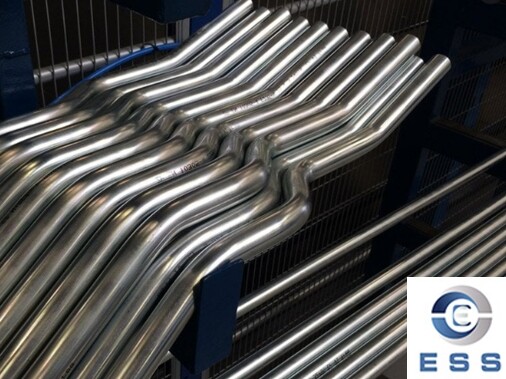Hydraulic
tubes are used to transport fluids to hydraulic components, accessories, valves, flanges and
other tools, which sometimes cause oil leakage. There are many reasons for
hydraulic tube leakage, which may be due to skewed or damaged pipe connections,
or aging of seals. Therefore, before handling the oil leakage, you must first
find out the cause of the oil leakage and then handle it accordingly.

The reasons for hydraulic tube joints to
leak may include:
1. Compression joints: The pipe is
subjected to external force or impact, causing the compression joints to loosen
or the pipe end face to deform.
2. Flared pipe joints: Excessive flaring,
substandard quality or multiple disassembly, resulting in flaring deformation
or cracks.
3. Sealing ring problem: The sealing ring
is aged, deformed, not assembled in place or not compacted, resulting in poor
sealing.
4. External force impact: The pipe is
subjected to large external force or impact, causing the compression joints to
loosen or the pipe end face to deform.
So how to solve the problem of hydraulic tube joints leaking?
1. Replace the seal
If the cause of the oil leakage is aging or
damage to the seal, then the seal needs to be replaced. When replacing seals,
you need to pay attention to choosing the right seals and strictly follow the
prescribed methods to replace them. Or use epoxy resin for sealing, which can
quickly fill the holes and form a strong sealing layer. Use a pressure belt to
wrap the belt around the leak of the oil pipe to form pressure, thereby
reducing oil leakage.
2. Re-tighten the connection
If the cause of the oil leakage is that the
pipe connection is skewed or not tightened, then you need to re-tighten the
connection. Before re-tightening, you need to check whether the connection is
flush and use the correct tools to tighten it. Check whether the pipeline is
subjected to external force or impact force, and eliminate the influence of
external force.
3. Repair damaged pipelines
If the cause of the oil leakage is that the
pipeline is damaged, then it needs to be repaired. Pipeline repair can be
carried out by welding, glue bonding and other methods. Welding repair requires
draining the oil in the hydraulic oil tank, using an angle grinder to finely
grind the area around the oil leak until the metallic luster is exposed, and
finally using two-protection welding or welding rod manual arc welding for
welding repair.
4. Replace the leaking pipeline
If the leaking pipeline cannot be repaired,
then the leaking pipeline needs to be replaced. When replacing the pipeline,
you need to pay attention to choosing the appropriate pipeline and strictly
follow the prescribed method to replace it.
5. Use hydraulic joints
The hydraulic joint is a part specially
used to connect and seal hydraulic tubes, which can effectively prevent oil
leakage. The hydraulic joint is simple to install, can be quickly disassembled
and replaced, and the repair effect is stable and reliable.
Summary
During the process of hydraulic tube oil
leakage treatment, you need to pay attention to safety. First of all, operators
should be prohibited from contacting the leaking liquid to avoid accidents.
Secondly, prepare the corresponding tools and materials, and operate in strict
accordance with the operating procedures. Hydraulic tube oil leakage treatment
is a routine maintenance work, which is very important for maintaining the
stable operation of the hydraulic system. During the oil leakage treatment process,
pay attention to safety to ensure the personal safety of operators and the
integrity of equipment.













 Eastern Steel Manufacturing Co.,Ltd not only improve product production and sales services, but also provide additional value-added services. As long as you need, we can complete your specific needs together.
Eastern Steel Manufacturing Co.,Ltd not only improve product production and sales services, but also provide additional value-added services. As long as you need, we can complete your specific needs together.










